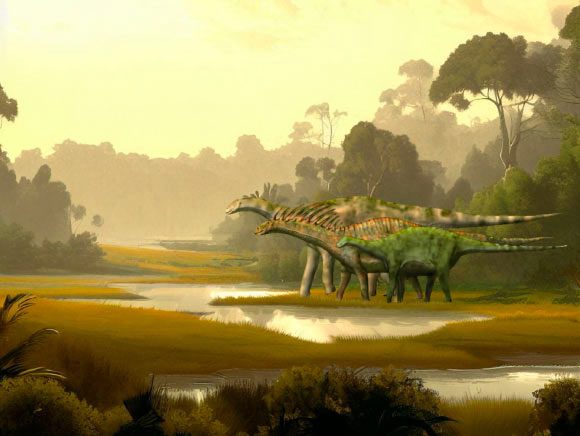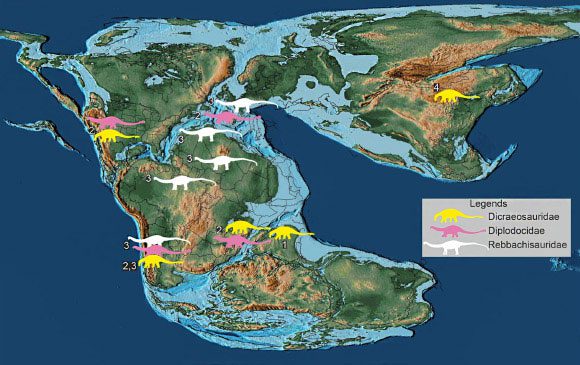In the state of Rajasthan in western India, paleontologists have recently unearthed an oversized fossilized skeleton of a previously unknown creature.
The new species has been named Tharosaurus indicus, belonging to the renowned group of “lizard-footed dinosaurs” known as sauropods, according to research results from the Indian Institute of Technology and the Geological Survey of India.

A graphic depicting various species in the family of these creatures, including the recently unearthed specimen in India – (Photo: SCI-NEWS)
This represents a lineage of giant creatures, including the group of titanosaurs, which were the largest animals to ever walk the continents, with the heaviest specimens weighing up to 70 tons, unearthed in Argentina.
Despite their massive size, the entire lineage consisted of gentle herbivores.
The creature unearthed in India is smaller but certainly weighed several tons when alive, as its skeletal remains were spread over an area of up to 25m2.
It roamed the Indian subcontinent during the middle Jurassic period, approximately 167 million years ago, making it one of the oldest sauropods known. The golden age of this great group of dinosaurs fell during the later Cretaceous period and ended with the catastrophic Chicxulub asteroid impact 66 million years ago.

A distribution map of lizard-footed dinosaur species on the supercontinent Pangea (also known as Pangaea, which existed during the Mesozoic era) – (Photo: Bajpai)
The analysis results were published in the journal Scientific Reports, also indicating that Tharosaurus indicus belongs to a family known as dicraeosaurids within the larger lineage of sauropods.
Other dicraeosaurids have been discovered in North America, Asia, Africa, and South America, highlighting the widespread distribution of this family of creatures.
According to researcher Sunil Bajpai from the Indian Institute of Technology, the new creature has a rather typical morphology in the sauropod group, with a small head, a long neck and tail, and legs as thick as columns in ancient temples, moving on four legs.
Additionally, it possesses features characteristic of the dicraeosaurid family, including a distinctive vertebral morphology.
The creature in India was fossilized in a relatively peaceful state, with its skeletal parts not perfectly preserved but still connected over a vast area where it rests, showing little disturbance.
This discovery provides further insight into the diverse world of rich lizard-footed dinosaurs in India, which was once a fertile and vibrant life area that belonged to the now-broken supercontinents Gondwana and Pangea.




















































